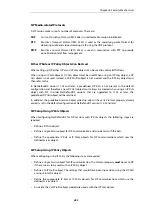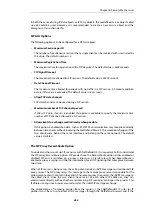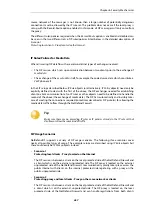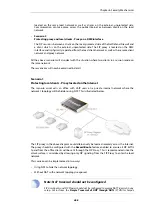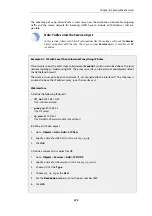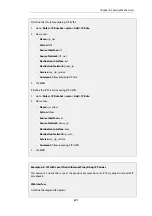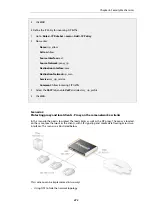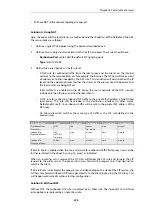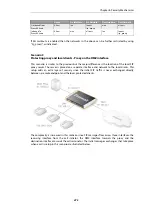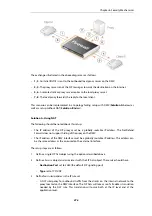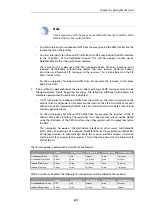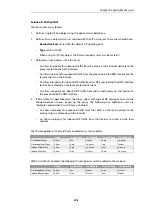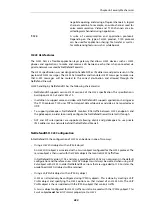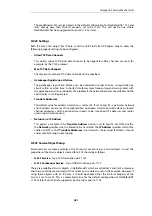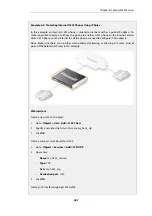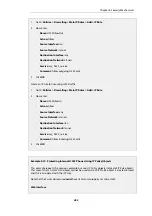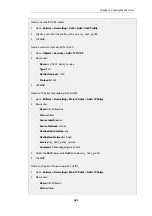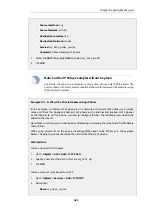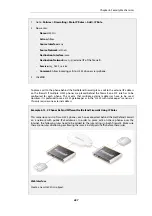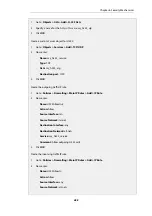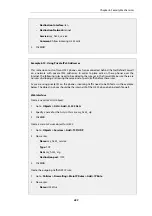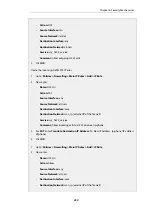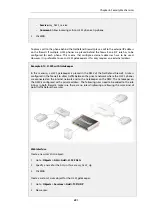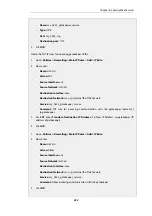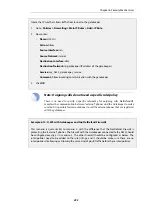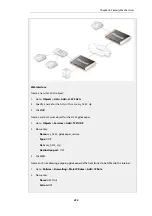
6.2.10. The H.323 ALG
Overview
H.323 is a standard approved by the International Telecommunication Union (ITU) to allow
compatibility in video conference transmissions over IP networks. It is used for real-time audio,
video and data communication over packet-based networks such as the Internet. It specifies the
components, protocols and procedures for providing such multimedia communication,
including Internet phone and voice-over-IP (VoIP).
H.323 Components
H.323 consists of four main components:
Terminals
Devices used for audio and optionally video or data
communication, such as phones, conferencing units, or
"software phones" such as the product "NetMeeting".
Gateways
An H.323 gateway connects two dissimilar networks and
translates traffic between them. It provides connectivity
between H.323 networks and non-H.323 networks such as
public switched telephone networks (PSTN), translating
protocols and converting media streams. A gateway is not
required for communication between two H.323 terminals.
Gatekeepers
The Gatekeeper is a component in the H.323 system which
is used for addressing, authorization and authentication of
terminals and gateways. It can also take care of bandwidth
management, accounting, billing and charging. The
gatekeeper may allow calls to be placed directly between
endpoints, or it may route the call signaling through itself
to perform functions such as follow-me/find-me, forward
on busy, etc. It is needed when there is more than one
H.323 terminal behind a NATing device with only one
public IP.
Multipoint Control Units
MCUs provide support for conferences of three or more
H.323 terminals. All H.323 terminals participating in the
conference call have to establish a connection with the
MCU. The MCU then manages the calls, resources, video
and audio codecs used in the call.
H.323 Protocols
The different protocols used in implementing H.323 are:
H.225 RAS signaling and Call
Control (Setup) signaling
Used for call signaling. It is used to establish a connection
between two H.323 endpoints. This call signal channel is
opened between two H.323 endpoints or between a H.323
endpoint and a gatekeeper. For communication between
two H.323 endpoints, TCP 1720 is used. When connecting
to a gatekeeper, UDP port 1719 (H.225 RAS messages) are
used.
H.245 Media Control and
Transport
Provides control of multimedia sessions established
between two H.323 endpoints. Its most important task is to
Chapter 6: Security Mechanisms
479
Summary of Contents for NetDefendOS
Page 30: ...Figure 1 3 Packet Flow Schematic Part III Chapter 1 NetDefendOS Overview 30 ...
Page 32: ...Chapter 1 NetDefendOS Overview 32 ...
Page 144: ...Chapter 2 Management and Maintenance 144 ...
Page 284: ...Chapter 3 Fundamentals 284 ...
Page 392: ...Chapter 4 Routing 392 ...
Page 419: ... Host 2001 DB8 1 MAC 00 90 12 13 14 15 5 Click OK Chapter 5 DHCP Services 419 ...
Page 420: ...Chapter 5 DHCP Services 420 ...
Page 573: ...Chapter 6 Security Mechanisms 573 ...
Page 607: ...Chapter 7 Address Translation 607 ...
Page 666: ...Chapter 8 User Authentication 666 ...
Page 775: ...Chapter 9 VPN 775 ...
Page 819: ...Chapter 10 Traffic Management 819 ...
Page 842: ...Chapter 11 High Availability 842 ...
Page 866: ...Default Enabled Chapter 13 Advanced Settings 866 ...
Page 879: ...Chapter 13 Advanced Settings 879 ...

